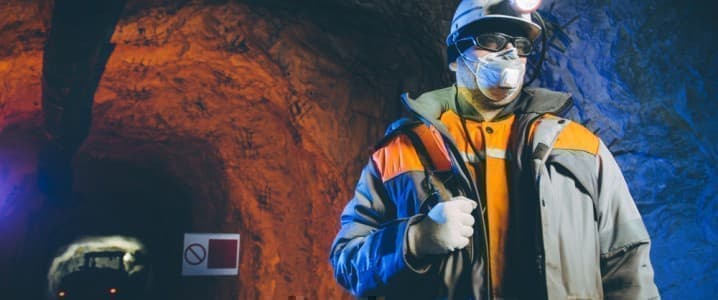Back in January, McKinsey published a report titled “What are the six key characteristics of the net-zero transition?” In it, the consultancy estimated that expenditure on the energy transition would need to rise by $3.5 trillion annually for the next 30 years in order to meet net-zero goals. What McKinsey didn’t say was that a lot of this money would have to go into mining.
Global energy transition plans rely heavily on the switch from fossil fuel power generation to wind and solar power generation and from internal combustion engines to electric motors. What this switch will mean is a surge in the consumption of metals and minerals.
Back in 2019, Wood Mackenzie estimated that the global wind power industry alone would consume more than 5.5 million tons of copper by 2028. Solar farms require 5.5 tons of copper per MW of capacity. And a plug-in electric car requires more than 130 pounds of copper. Meanwhile, there are estimates that solar farms alone could consume half of the global supply of aluminum by 2050, and aluminum is already in short supply.
Besides copper and aluminum, the energy transition would also need nickel, lithium, manganese, and cobalt: the battery metals. These will be essential for EV batteries and battery storage for wind and solar installations. And investors are now waking up to the fact that these metals are not exactly readily available and sitting in a warehouse.
The Financial Times reported last week that investors are rushing into mining stocks in search of certain and strong returns at a time of rising inflation. Higher commodity prices, including metal prices, also whetted investor appetite, pushing the stock of BHP and Anglo American to a record high last week. Analysts are forecasting even stronger interest when miners begin to report financial results next week. And this might only be the start.
The mining industry is not exactly a public favorite. In fact, it is a pariah not dissimilar to oil and gas because of its environmental footprint. But this is changing because, without the mining industry, there will literally be no energy transition.
The World Bank forecasted in a 2020 report that the production of cobalt, lithium, and graphite could increase by almost 500 percent by 2050. More than 3 billion tons of metals and minerals will need to be mined to provide the necessary raw materials for all the solar, wind, and geothermal installations that will be needed for the 2-degree scenario of the Paris Agreement. Should we pick the 1.5-degree scenario, demand for metals and minerals will soar even higher.
Matching supply to this demand, however, would be a challenge, adding further upside potential to mining stocks. Political uncertainty in some of the world’s biggest mining jurisdictions, such as the Democratic Republic of Congo or Peru and Chile, the world’s top sources of copper remains a major risk factor. Falling ore grades complicate matters further. And the demand for sustainability certification of the output, pioneered by the European Union, will not exactly have a bearish effect on mining commodity prices.
“Clearly in an environment of higher inflation one of the biggest challenges in the market for any investor is to get real income opportunities,” Berenberg analyst Jonathan Stubbs told the Financial Times.
Mining is already offering these real income opportunities, and it is about to make them huge if governments stick to their renewable plans. As Goldman Sachs’ Jeffrey Currie put it a while ago in comments to Bloomberg, “This is a molecule crisis. We’re out of everything, I don’t care if it’s oil, gas, coal, copper, aluminum, you name it we’re out of it.”
Part of the reason for this is the pandemic, and another part is supply chain disruptions. A third part, however, is a change in how mining managers do their job. As the FT’s Neil Hume explains, over the past few years big miners - pretty much like big oil companies - have switched from growth at all costs to shareholder returns as a top priority. As a result, Hume says, they have steered clear from investments in major new projects, and their project pipelines are uncomfortably low.
The FT report cites Deutsche Bank as forecasting mining investors in the five top players in the industry could see $48 billion in returns this year. This could grow to $60 billion, the bank said, if commodity prices hold at current levels.
Of course, despite all the tailwinds for mining stocks, headwinds remain, in the form of higher prices for energy commodities, which heavily influence miners’ production costs and the abovementioned sustainability certification—a push for miners to lower the carbon and overall environmental footprint of their operations. All this could push prices to excessively high levels, which would in turn discourage demand, regardless of ambitious Paris Agreement targets.
No industry is without risk, of course, and in mining, this risk is notorious. Under an energy transition scenario, the risk becomes existential. Far from all, or even most, of the critical metals and minerals in the transition are in what one might call reliable jurisdictions such as, for example, Australia.
Moreover, the period from successful exploration to an operating mine can take a decade or more, all of which means a sustained gap between supply and demand, and higher prices. Mining investors may be in for the ride of their lives.
By Irina Slav for Oilprice.com
More Top Reads From Oilprice.com:
- IEA: Chronic OPEC+ Undersupply Could Propel Oil Prices Even Higher
- Geopolitical Risk Premium Could Send Oil Prices To $120
- OPEC Gets Further Behind Oil Production Quotas

















